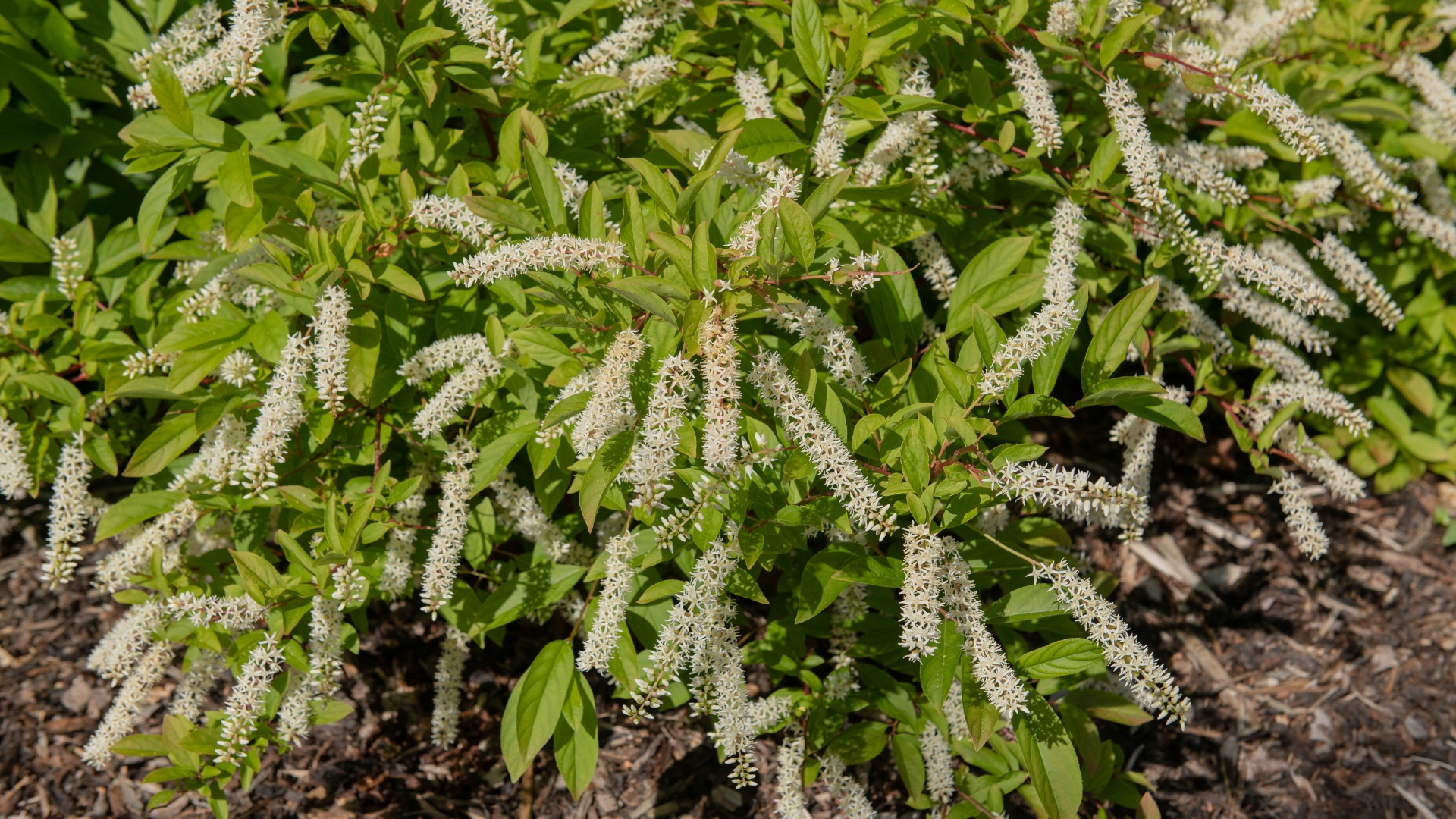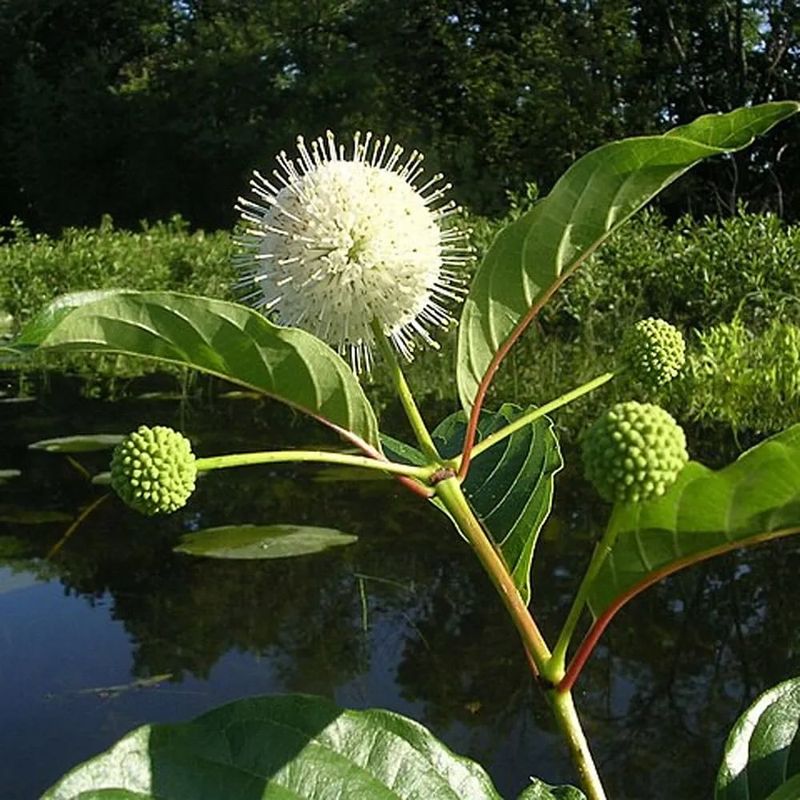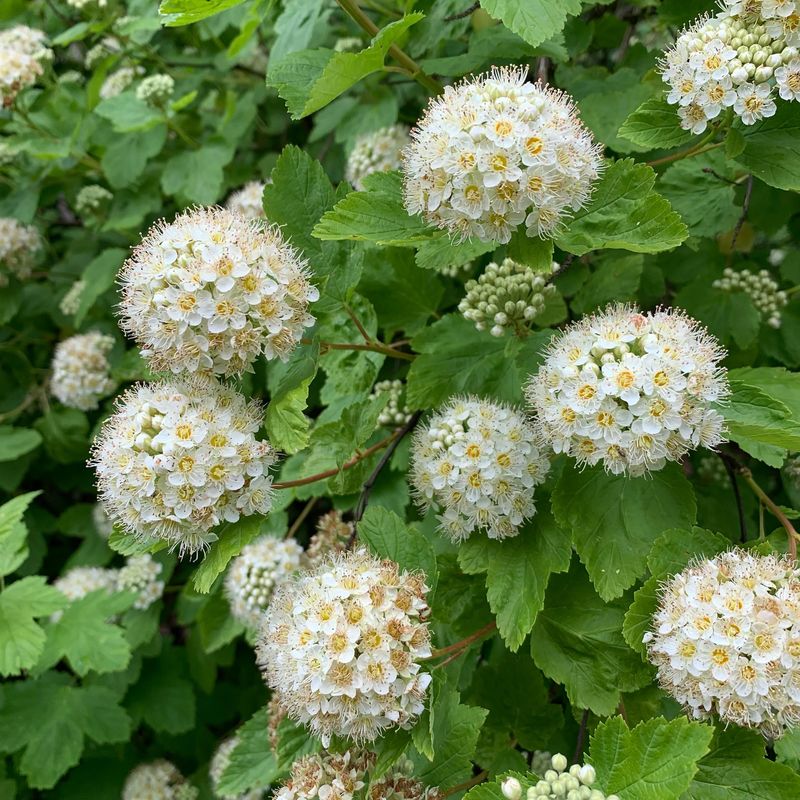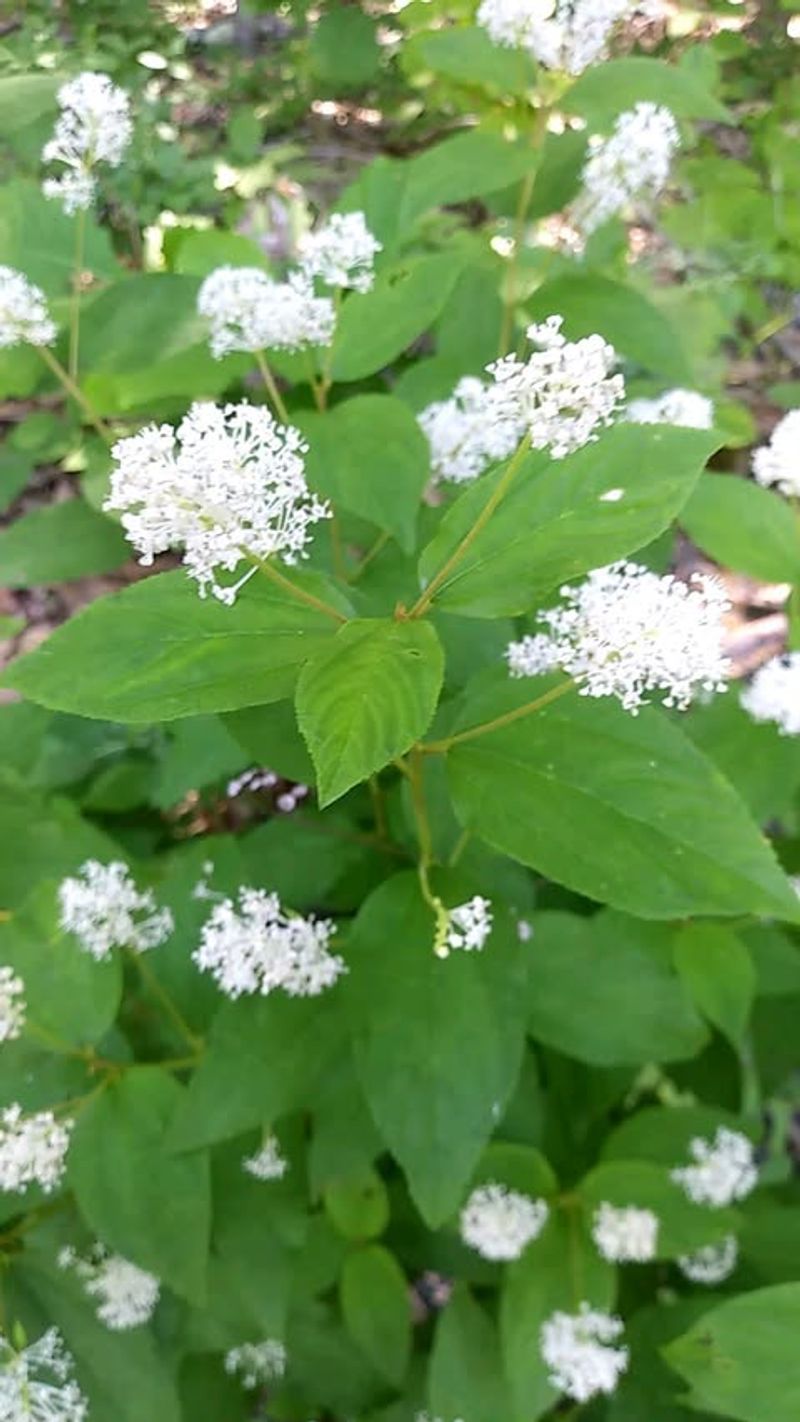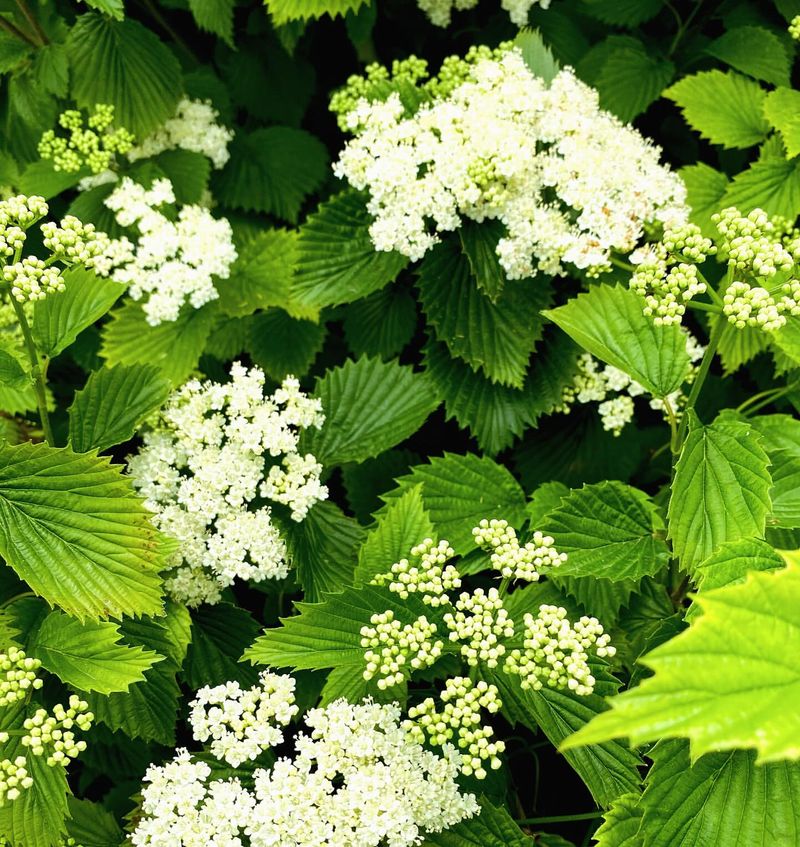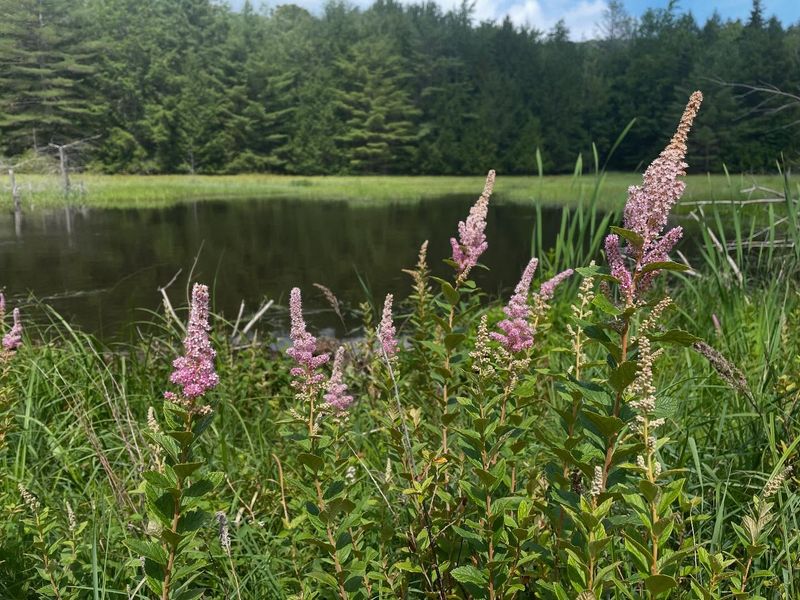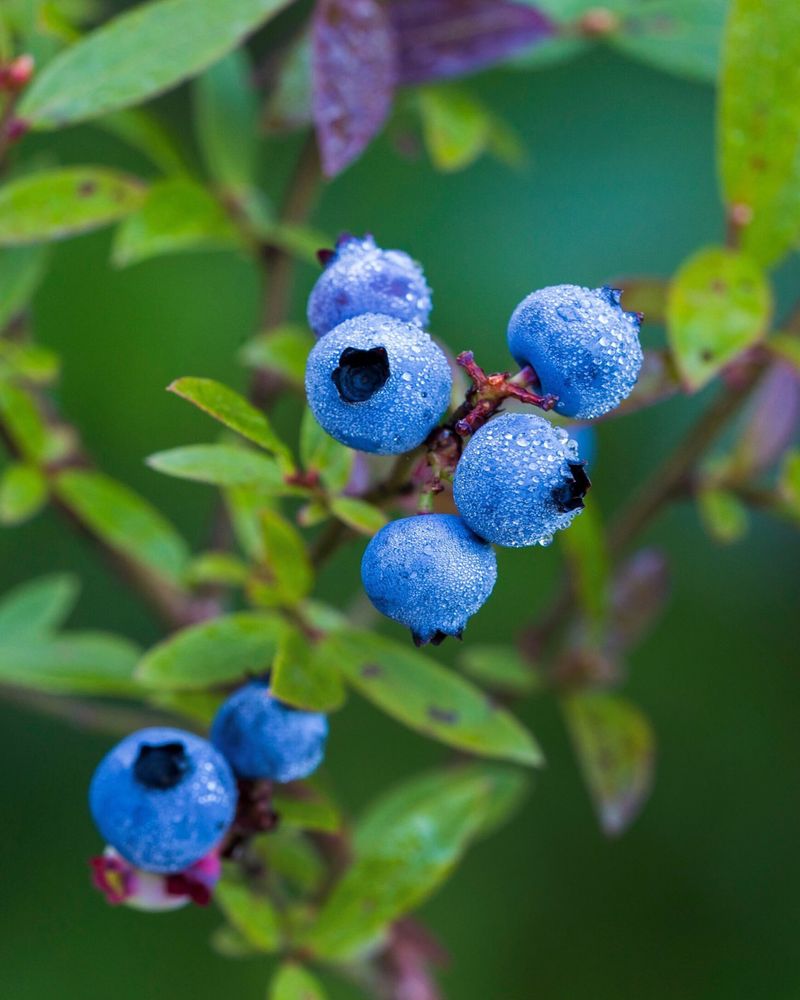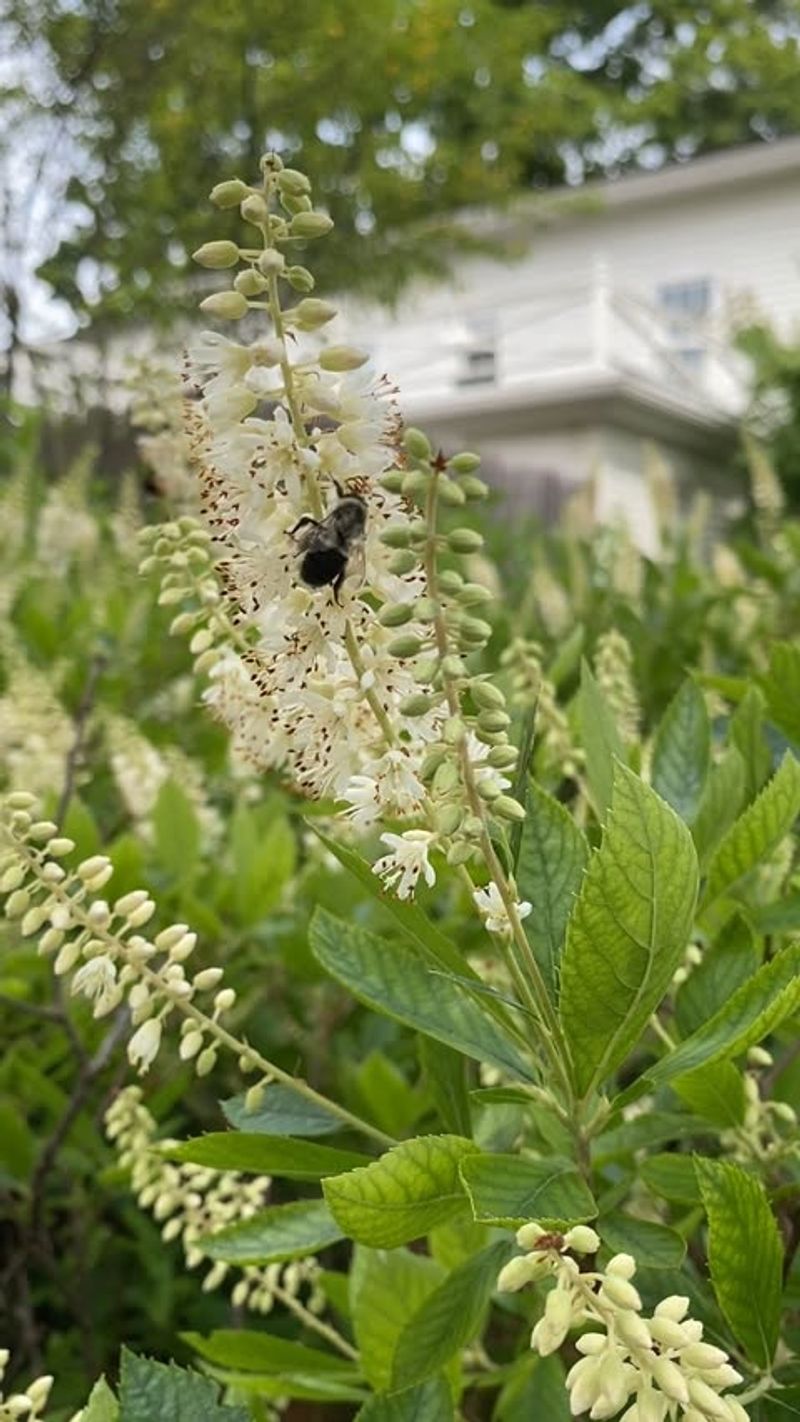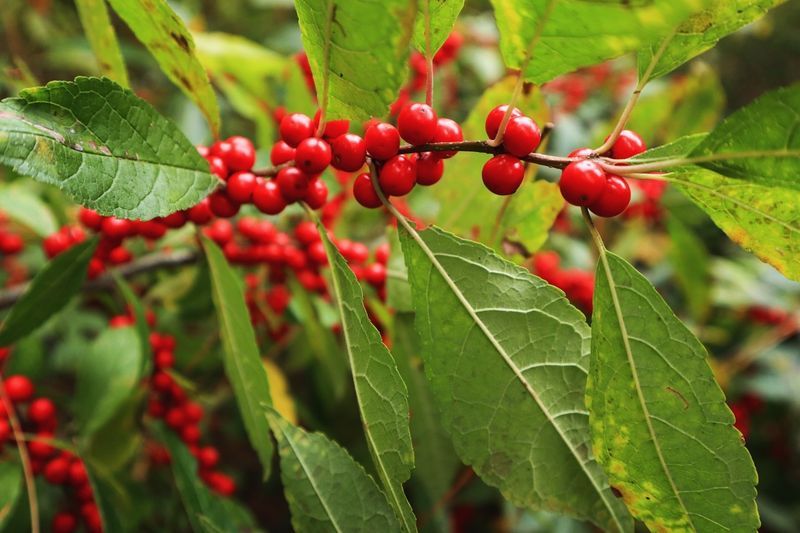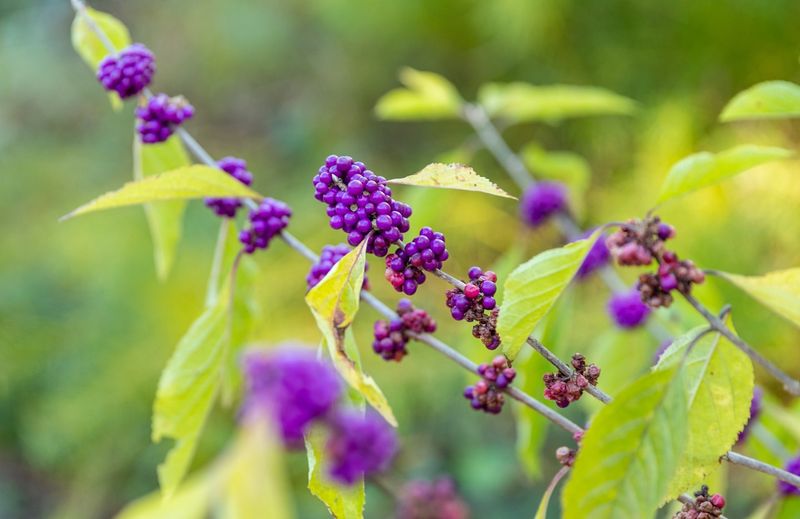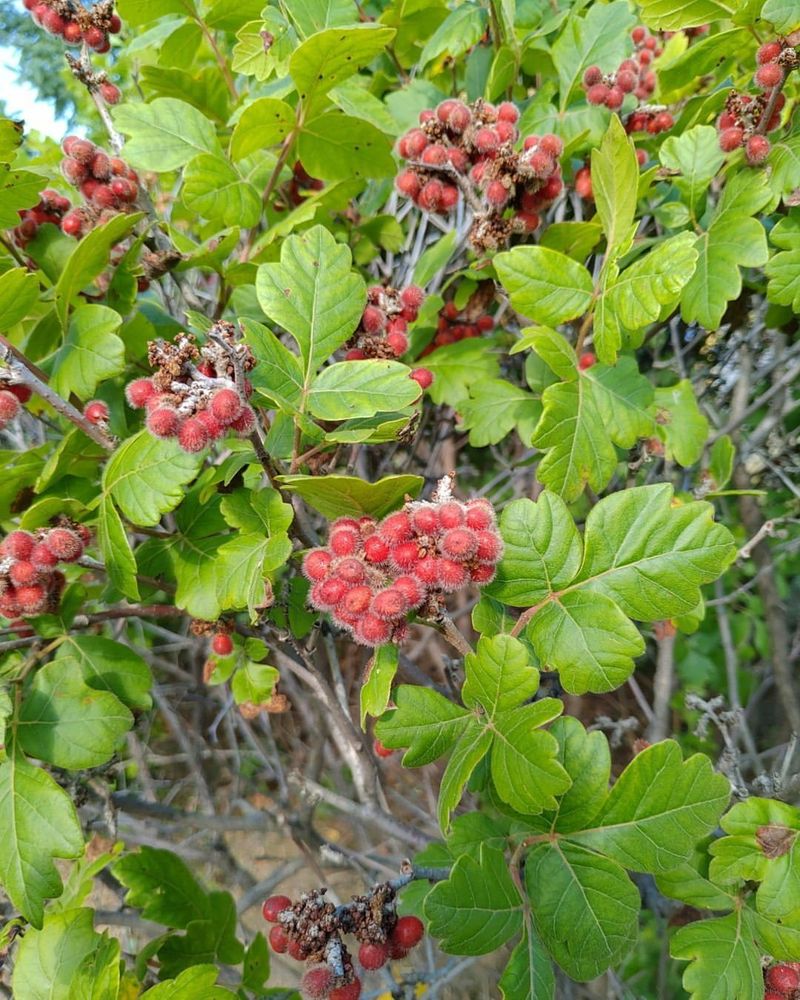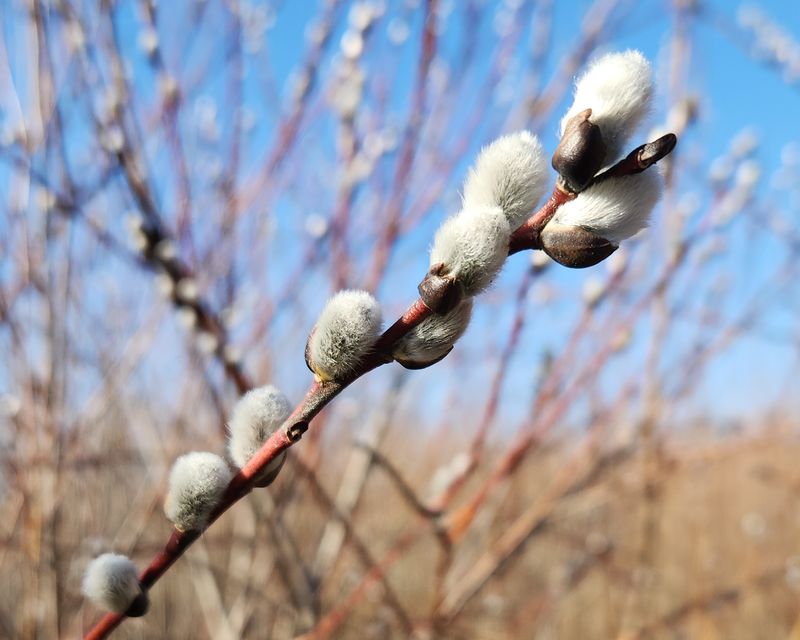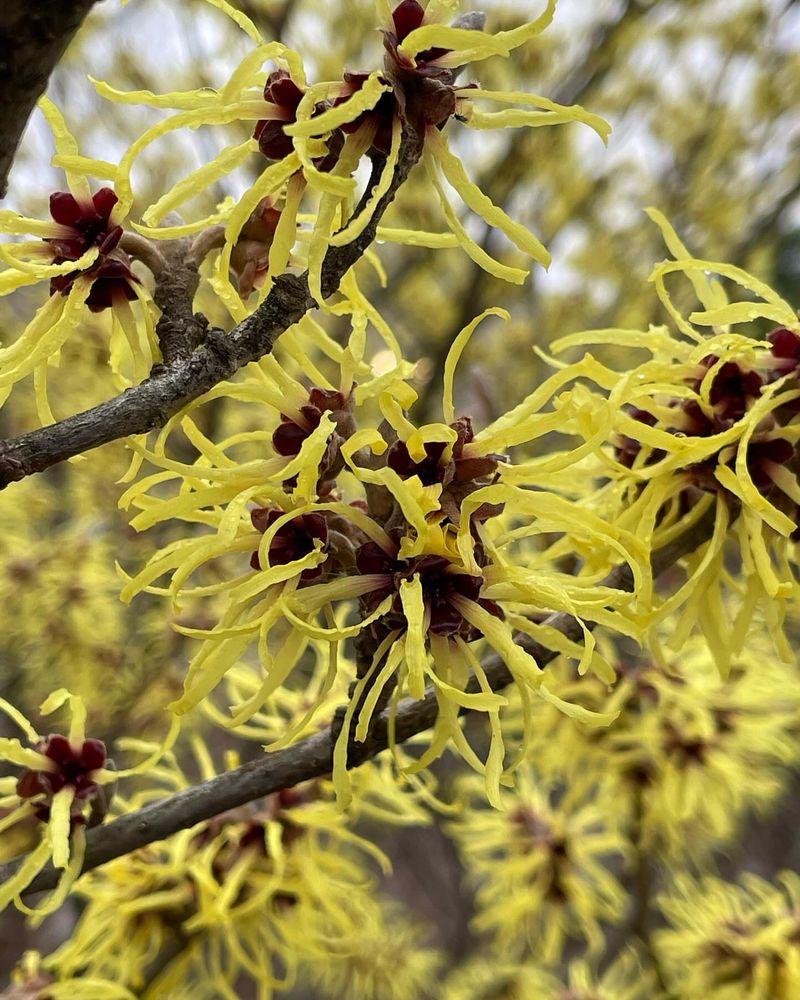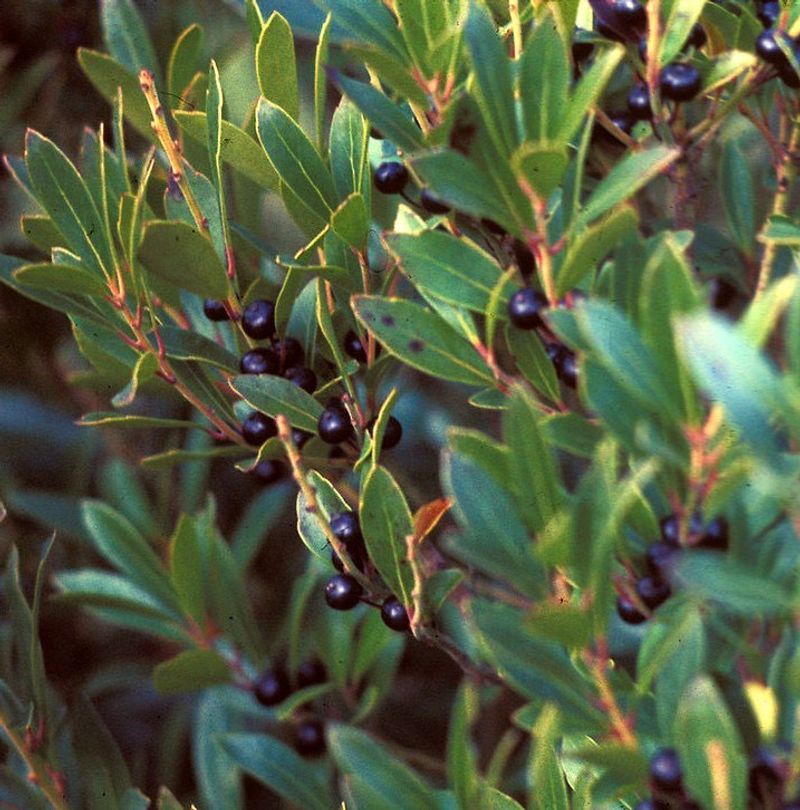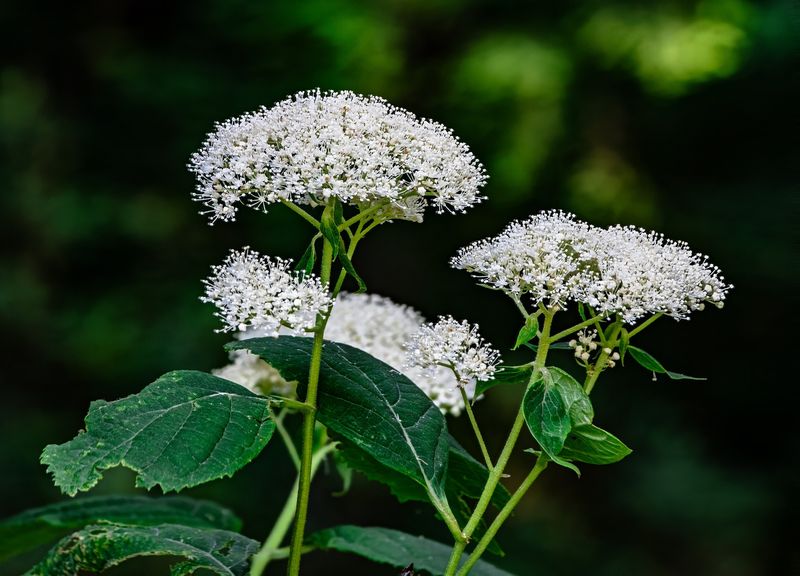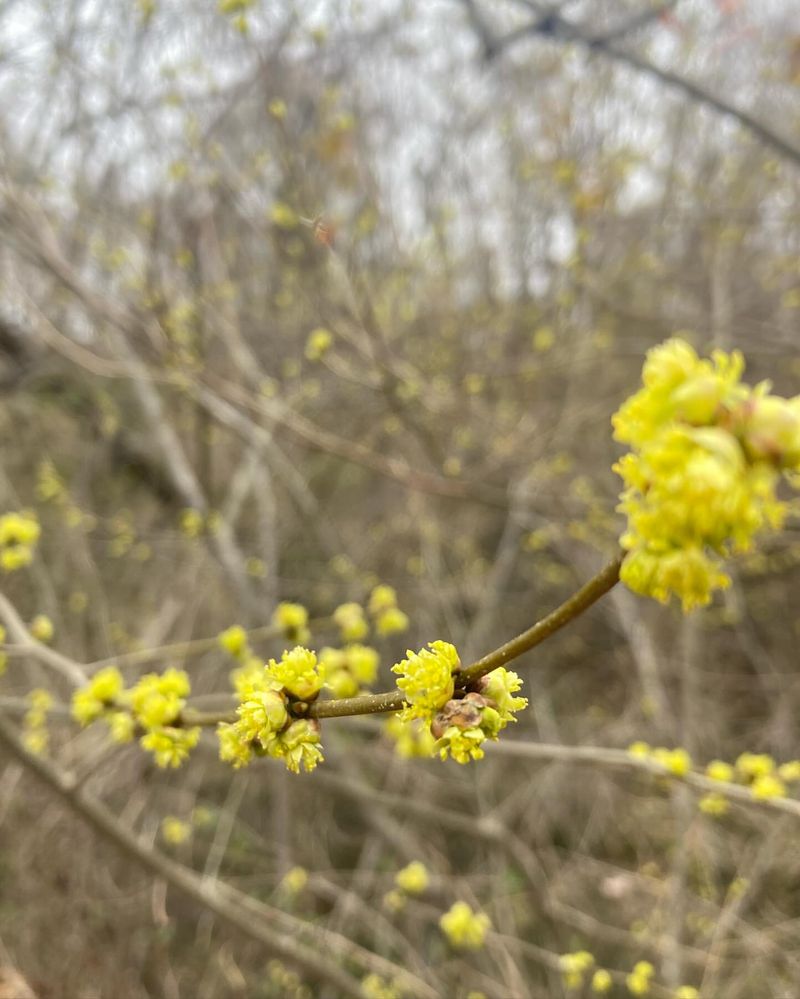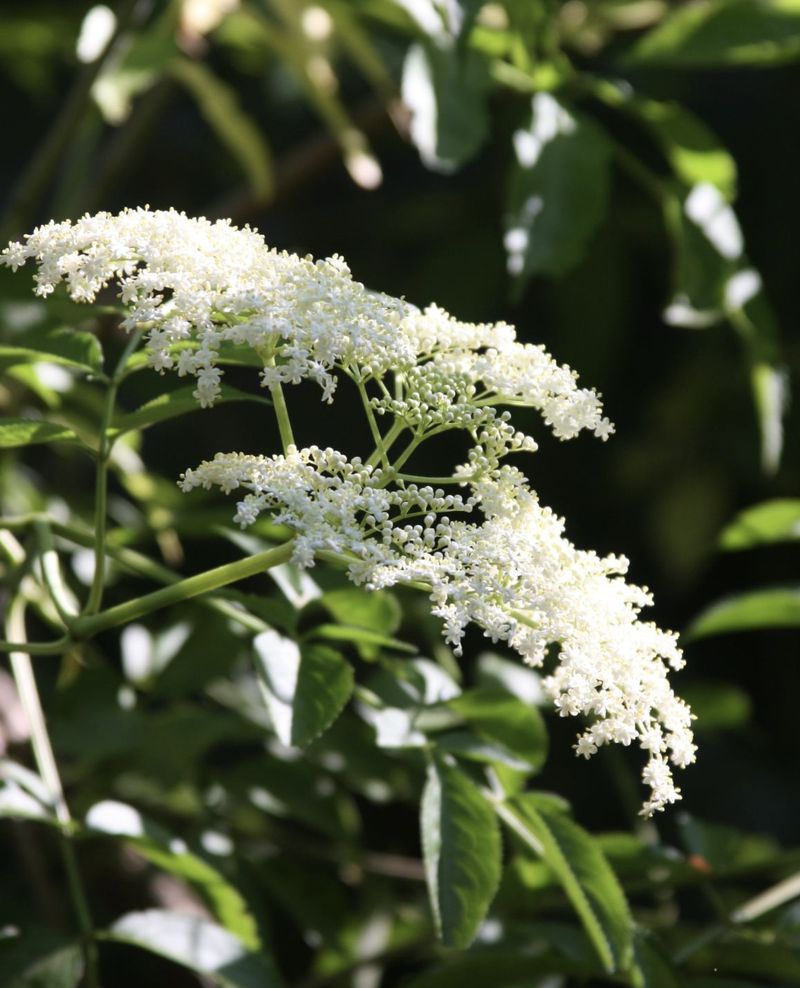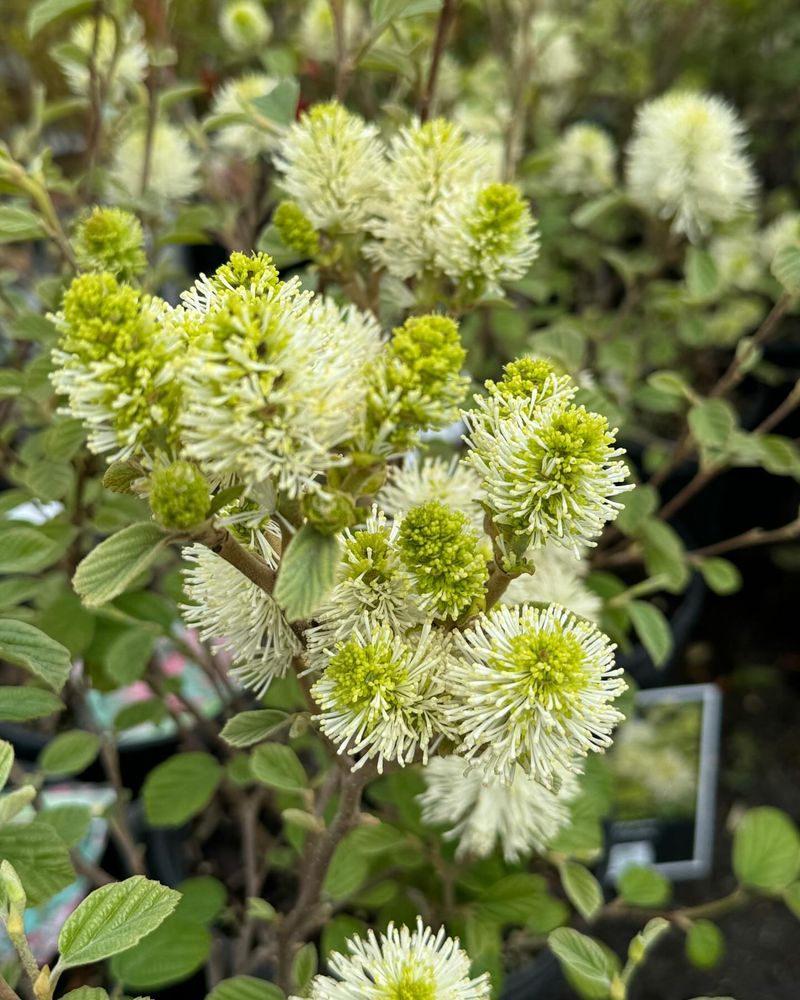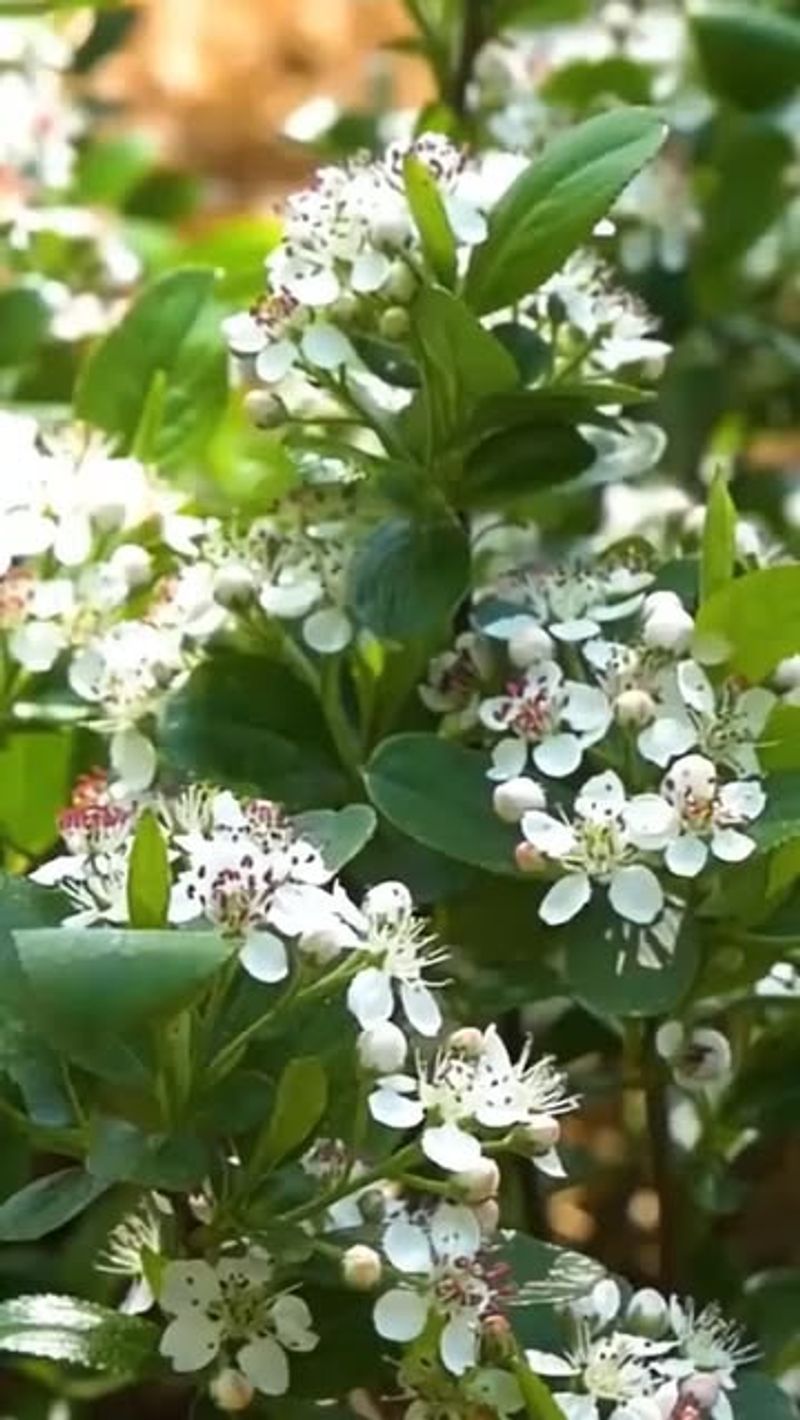Bees are still buzzing around New York gardens in late summer, and they’re on the lookout for their next nectar fix. I’ve found that native shrubs are some of the best winged-visitor magnets you can plant.
Not only do they look great, but they also give bees exactly what they need when other blooms are fading. It’s like a late-season buffet they won’t forget.
If you’ve ever wanted to turn your yard into a bee haven, these 20 shrubs are a solid place to start.
1. Buttonbush
The quirky spherical flowers look like little pincushions covered in nectar-rich pins that bees can’t resist. New York’s wetland areas showcase these unique shrubs in late summer.
Their ability to thrive in soggy conditions makes them perfect for those challenging wet spots in your garden where other plants struggle. Honey bees especially love visiting these distinctive blooms.
2. Summersweet
Fragrant white flower spikes emerge just when New York gardens start looking tired in August. The sweet vanilla scent attracts bees from surprising distances.
Despite its delicate appearance, summersweet handles tough conditions like a champ. It’s one of the few shrubs that blooms beautifully in shady spots, making it versatile for woodland garden edges throughout the Empire State.
3. Ninebark
Behind that peeling, papery bark lies a powerhouse for pollinators across New York state. The clusters of white or pink flowers transition to attractive seed heads that persist through fall.
What makes ninebark special is its ability to support specialist native bees. The tough nature of this shrub means it thrives in both urban settings and natural areas without fussing about soil quality.
4. New Jersey Tea
Don’t let the name fool you – this compact shrub is a bee magnet throughout New York! The frothy white flower clusters become absolutely covered with native bees during late summer months.
During the American Revolution, patriots used its leaves as a tea substitute. Today, this drought-tolerant plant supports an astonishing variety of specialist bees that have evolved specifically to gather its pollen.
5. Arrowwood Viburnum
Native to New York woodlands, this viburnum offers a double-feature for pollinators. Creamy white spring flowers attract early-season bees, while late-summer berries feed birds who spread seeds.
The arrow-straight branches once served Native Americans for making arrow shafts. Today, this adaptable shrub thrives in both sun and partial shade, making it easy to incorporate into almost any garden space.
6. Steeplebush
The distinctive pink spires rise like miniature steeples across New York’s meadows and wetland edges in late summer. Bumble bees particularly favor these nectar-rich blooms during August’s heat.
Also known as hardhack, this tough native can handle challenging conditions. The flowers start blooming from the top down, creating an extended period when bees can visit – crucial during the late-summer dearth period.
7. Highbush Blueberry
Beyond providing delicious berries for humans, these native shrubs support countless bees across New York. The bell-shaped spring flowers give way to nutritious berries, while the foliage turns brilliant red in fall.
Specialist bees like the southeastern blueberry bee have evolved specifically to pollinate these plants. The shrub’s multiple seasons of interest make it perfect for edible landscapes that benefit both people and pollinators.
8. Sweet Pepperbush
August gardens throughout New York come alive with the spicy-sweet fragrance that gives this shrub its common name. The bottle-brush flowers become absolutely covered with honey bees, bumble bees, and butterflies.
Native to eastern wetland edges, sweet pepperbush thrives in damp spots. The flowers open gradually from bottom to top, extending the blooming period and providing nectar over several crucial late-summer weeks when other sources are scarce.
9. Winterberry Holly
Unlike traditional hollies, this New York native drops its leaves in winter to showcase brilliant red berries. The inconspicuous spring flowers might not catch your eye, but they’re bee magnets in late summer.
Female plants produce the famous berries, but you’ll need a male plant nearby for pollination. These adaptable shrubs handle wet soils beautifully, making them perfect for those problematic areas where water collects after rain.
10. American Beautyberry
The show-stopping purple berries arrive in clusters just as New York’s summer heat begins to fade. Before the famous fruits appear, the small pink flowers provide critical late-season nectar for native bees.
Despite its delicate appearance, beautyberry handles drought like a champion once established. The arching branches create a naturally graceful form that works beautifully in informal gardens or naturalized areas throughout the state.
11. Fragrant Sumac
Unlike its taller cousins, this low-growing sumac forms a pollinator-friendly thicket perfect for New York’s challenging dry spots. The early yellow flowers provide crucial resources when bees first emerge in spring.
The citrus-scented leaves give this plant its common name. Despite being related to poison ivy, fragrant sumac causes no irritation, making it safe to incorporate into gardens where people and pollinators can enjoy its multiple seasons of interest.
12. Meadowsweet
Fluffy plumes of creamy white flowers emerge just when New York’s summer heat peaks. Native bees and honey bees alike flock to these nectar-rich blooms during the critical late-summer period.
Historically, meadowsweet was used medicinally by Native Americans and early settlers. The plant contains natural salicylates (similar to aspirin), which explains its traditional use for pain relief before modern medicine was available.
13. Pussy Willow
Those famous fuzzy catkins aren’t just cute – they’re lifesavers for early-emerging bees across New York state. The male plants produce pollen-rich flowers that provide crucial early-season nutrition.
Native willow species support more butterfly and moth species than almost any other woody plant. Their flexible branches can be harvested in late winter for floral arrangements, giving you a beautiful way to bring spring indoors.
14. Witch Hazel
When most New York plants have packed it in for the year, witch hazel surprises with spidery yellow blooms. These late-season flowers provide critical resources for the few bee species still active in fall.
The unusual blooming time makes witch hazel a standout in the landscape. Native Americans valued this plant for its medicinal properties, using the bark and leaves to create astringent washes – a tradition that continues in modern witch hazel products.
15. Inkberry Holly
Unlike its flashier holly relatives, this New York native keeps a low profile with subtle white flowers that bees adore. The evergreen leaves provide year-round structure in the garden landscape.
Female plants produce small black berries that persist through winter. This adaptable shrub handles wet feet better than most, making it perfect for rain gardens and bioswales where it can help manage stormwater while supporting pollinators.
16. Wild Hydrangea
Unlike cultivated hydrangeas, our native species offers genuine value to New York’s pollinators. The flat-topped flower clusters feature showy sterile blooms surrounding smaller fertile flowers packed with nectar.
Also called seven-bark for its peeling, multicolored bark, this understory shrub thrives in the dappled shade of woodland edges. The dried flower heads persist through winter, adding structural interest to the garden during New York’s snowy months.
17. Spicebush
Tiny yellow flowers appear along bare branches in early spring, providing crucial first food for New York’s emerging bees. The aromatic leaves and berries give this understory shrub its name.
Beyond supporting pollinators, spicebush serves as the host plant for the spectacular spicebush swallowtail butterfly. Early settlers used the dried berries as a substitute for allspice, creating a native alternative to imported spices.
18. Elderberry
Massive dinner-plate-sized flower clusters become absolute bee highways across New York in late summer. These native shrubs support an astonishing diversity of pollinators before producing nutritious purple berries.
Indigenous peoples throughout the Northeast treasured elderberry for food and medicine. Today, the flowers can be used for making cordials and the berries for immune-boosting syrups – sharing your harvest with both bees and your family.
19. Dwarf Fothergilla
Bottlebrush-like white flowers emerge in spring, providing early nectar for New York’s hungry bees. The blue-green summer foliage transforms into a spectacular rainbow of colors in fall.
Despite its southern origins, this native shrub handles New York’s cold winters beautifully. The honey-scented blooms attract a surprising diversity of native bees and butterflies, making it a powerhouse for pollinators despite its compact size.
20. Chokeberry
Delicate white flowers with pink centers attract diverse bee species throughout New York state. The glossy berries that follow provide essential late-season food for birds who spread seeds.
Despite the off-putting name, the berries are actually edible and extremely high in antioxidants. Black chokeberry handles urban pollution with ease, making it perfect for city gardens where both people and pollinators need more green space.

